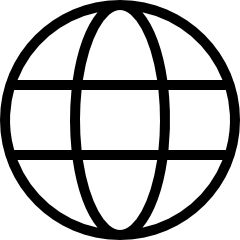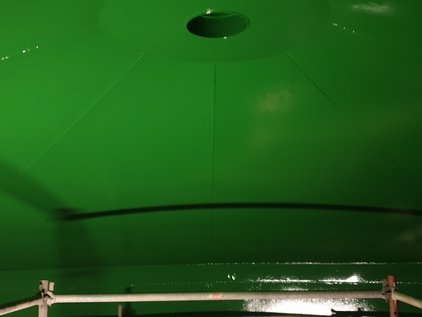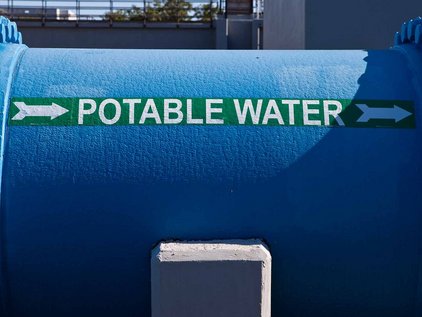SÄKALINE 200
Two-Pack Cold Cured Epoxy-based Abrasion Resistant Lining for Acidic to Strongly Alkaline Media. Matt, Light Grey Finish
SÄKAPHEN SÄKALINE 200 is a high-quality two-pack epoxy hydrophobic abrasion resistant lining. Formulated for self-priming and direct to metal application. SÄKAPHEN SÄKALINE 200 is resistant to varying mediums ranging from slightly sour to alkaline and all types of water including brackish, river, sea and deionized.
SÄKAPHEN SÄKALINE 200 once polymerized is fully machinable and can be applied on site and on concrete surfaces. The lining is resistant to temperature fluctuations.
SÄKAPHEN SÄKALINE 200 is a low-solvent containing ultra-high solid volume (wt.%) of 80% or more.
For the lining of Boilers and other Hot Water Tanks, Industrial Water and Sewage Gas Containers used in the paper and pulp industry.
| Product name | Unit | SÄKAPHEN® SÄKALINE 200 | ||
|---|---|---|---|---|
| Properties | - | Cold Cured Duroplast Coating | ||
| Resin base | - | Amine cured Epoxy system | ||
| Field of Application | - | Ceramic filled epoxy coating for the coating of boilers and other hot water tanks, industrial water and for sewage gas containers in the paper and pulp industry. | ||
| Cure Mechanism | - | Cold Cured Duroplast Coating | ||
| Quantity of components | - | 2 | ||
| Color | - | Light grey | ||
| Surface | - | Matt | ||
| General chemical resistance (All resistances have to be inquired separately!) | - | Resistant to various substances ranging from slightly sour to alkaline including all types of water, including brackish, river and sea water as well as deionized water. | ||
| pH Range | pH | n/a | ||
| Wet Film Thickness per layer | µm | 400 µm | ||
| Total dry film thickness | µm | 1000-2000 | ||
| Coverage | approx. kg/m²/DFT | 2,0 kg / m² / 1000µm | ||
| Surface Preparation | Sa | SA2 ½ - SA 3 | ||
| Surface Profile | µm | 40 - 60 µm | ||
| Temperature resistance dry (dry air oven) | °C | 10°C - 150°C | ||
| Temperature resistance wet (water) | °C | 10°C - 85°C | ||
| Resistance to water vapor diffusion | °C | ≤ ∆T 30°C | ||
| Overcoating Waiting Time | hours/23°C | 8-48 | ||
| Chemical Curing | days | 7-10 | ||
| Linear Thermal Expansion | µm | n/a | ||
| Pore testing | Volts | 4000 | ||
| Pendulum hardness acc. to König | 6° sec | 174 | ||
| Shore D Hardness | Shore D | 84 | ||
| Adhesion Test | N/mm² [MPa] | 20,65 | ||
| Salt spray test | hours | 15000 | ||
| Impact Strength | mm (1 kg) | 1000 | ||
| Surface smoothness (Ra) | µm Ø 3 readings | 0,29 | ||
| Surface tension | mN/m | >28 <31 | ||
| Taber Abrasion resistance, CS17 wheel, 1kg | mg/1000 r. | 50 | ||
| Crosscut | class | n/a | ||
| Heat conductivity Ø 12,7x2,0mm on C-Steel with 67,37 w/mK | W/mK | n/a |
The foundations of many epoxy resins consist of bisphenol A synthesized with epichlorohydrin. Through curing (for example, mixing with diamines) thermosets are produced, primarily used for linings, adhesives and casting resins for industrial use.







